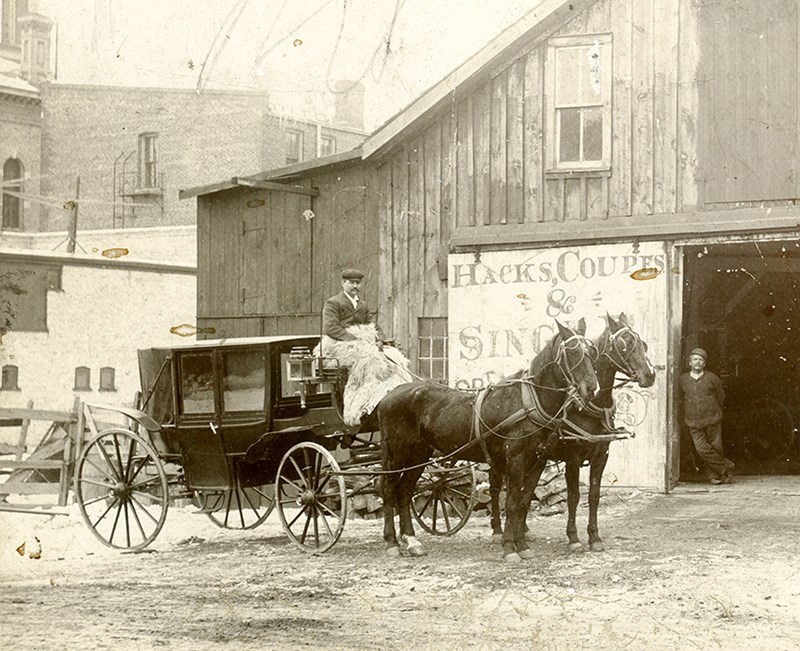Phil Egan
The building of a road to London by Malcolm Cameron was the first step in tearing Port Sarnia away from its transportation dependency on the blue waters of the St. Clair River.
Cameron had moved to The Rapids from Perth in 1834. Already a member of the legislature, he built an empire in lumber, shipping and land acquisition. Prior to his construction of the London Road, travellers would sail to Detroit, cross the river to Windsor and take a train to London. They would travel 170 miles to arrive at a destination only 60 miles away.
It was almost twenty years before the arrival of the railroad. So the day of Jan. 7, 1840 was a big one in Port Sarnia when, in the bleak of winter, the first stagecoach arrived from London.
At intervals along the route, inns and taverns had been established to provide convenience stops for travellers, as well as spots for watering and the changing of horses hauling coaches.
The first stop in Port Sarnia was “The Royale,” later known as Hall’s Hotel. This facility was located on the south side of London Road, between Vidal and Christina streets.
This lodging house and tavern would become well known 26 years later during the Fenian Scare, when Sarnians worried about an invasion by Irish fanatics from the United States. Hall’s Hotel had so many out-of-town soldiers stationed there to protect the town that it became commonly known as “The Barracks.”
Later, it was torn down to make room for a house. Older Sarnians may remember the old Supertest gas station on that part of London Road, which was the former site of Hall’s Hotel.
Frank Smith’s National Hotel was another stop. It was reputed to have the finest bar in the area. Next was the Western Hotel at Front and George streets, later the site of the Sarnia Hotel.
The next stops were the uniquely named Double N-I, then the wood frame structure of the first Belchamber Hotel, just south of the Double N-I. A massive downtown fire in 1867 would destroy the first Belchamber. The ornate, three-storey brick structure that would take its place was constructed on the site of the Exchange Hotel, previously the Double N-I.
Farther south was the St. Clair House. Finally, at the corner of Front and Davis streets, stood Captain Oake’s Saloon and, across the street on the site of the present post office and federal building, the old Alexander House. This popular summer hotel had wide verandahs and an unobstructed view of the St. Clair River.
Those were the old inns of our town.
